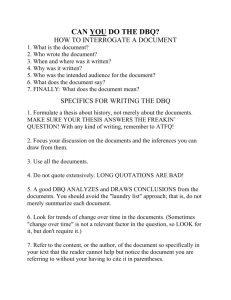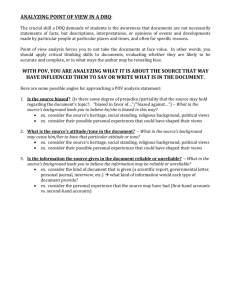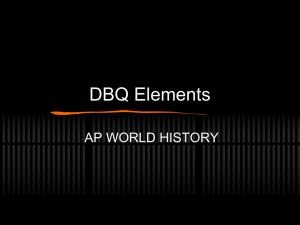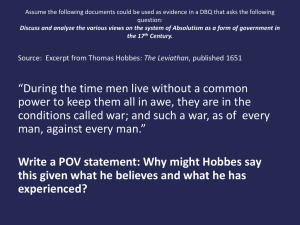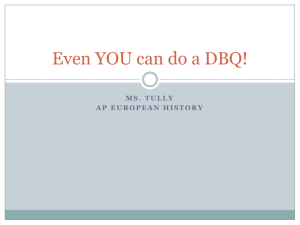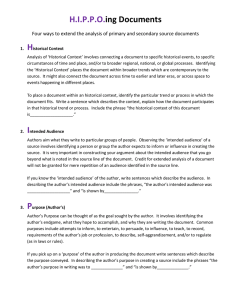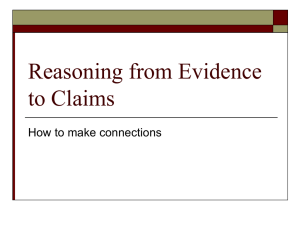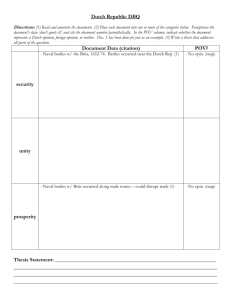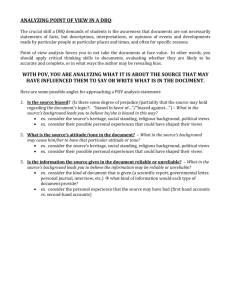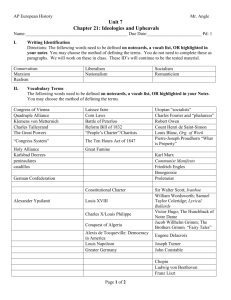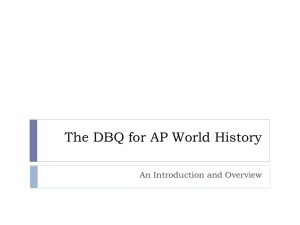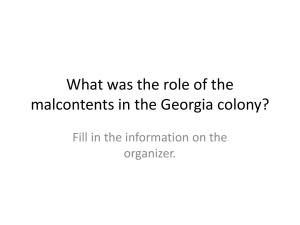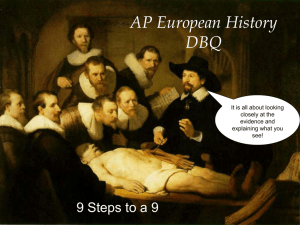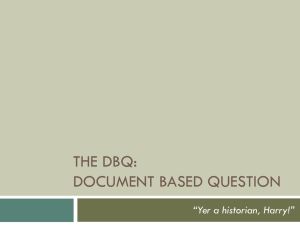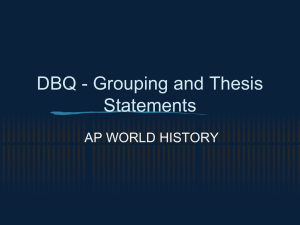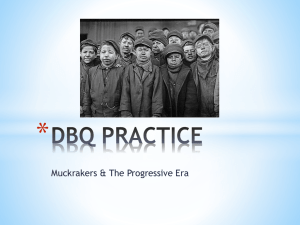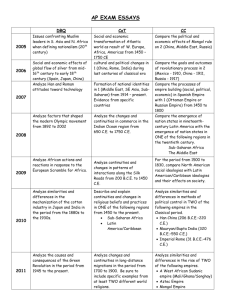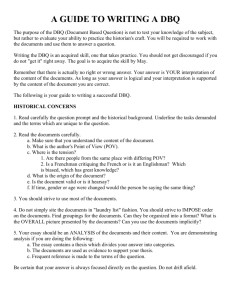File
advertisement
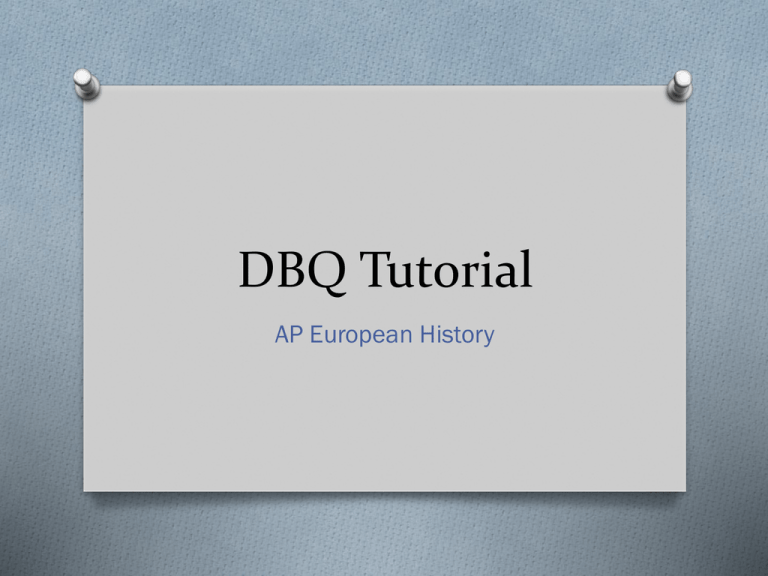
DBQ Tutorial AP European History What is the DBQ? O Document Based Questions O 22.5% of exam O 15 minutes mandated for reading all of the questions in Section II: 115 self-budgeted minutes to write 3 essays O Recommended writing time: 45 minutes Read About It O Turn to p. xlix in your textbook O Read through the section about the DBQ to p. liii. O Be prepared to answer questions based on the reading. The Rubric: Basic Core (1-6 points) O Provides an appropriate, explicitly stated thesis that O O O O O directly addresses all parts of the question (1 pt). Discusses a majority of the documents individually and specifically (1 pt). O Majority: Half + 1 Demonstrates understanding of the basic meaning of a majority of the documents (1 pt). Supports the thesis with appropriate interpretations of a majority of the documents (1 pt). Analyzes point of view or bias in at least THREE documents (1 pt). Analyzes documents by explicitly grouping them in at least THREE groups (1 pt). The Rubric: Expanded Core O A basic score of 6 must be obtained before the student can earn expanded core points O Scored for the following qualities: O Has a clear, analytical, and comprehensive thesis O Uses all or almost all of the documents O Addresses all parts of the question thoroughly O Uses documents persuasively as evidence O Shows understanding of nuances in the documents O Analyzes point of view or bias in at least four documents cited in the essay O Analyzes the documents in additional ways— additional groupings or other O Brings in relevant “outside” historical content Step 1: Read the Prompt Carefully (DBQ #1) O Analyze how political, religious, and social factors affected the work of scientists in the sixteenth and seventeenth centuries. Sample A O Analyze the factors that contributed to the emergence of a workers’ opposition movement in Communist Poland in the period from 1956 – 1981. Sample B O Analyze the arguments and practices concerning religious toleration from the sixteenth to the eighteenth century. Sample C O Analyze various arguments that emerged over the course of the nineteenth century about how to improve the lives of European workers. Step 3: Read the Documents & Consider These Questions O What is the content? Context? O What information did the college board highlight about the authors? (useful for POV…) O What initial grouping (based on the prompt) does the document suggest? O Does the document suggest an additional group or sub-group topic? Step 4: Analyze Documents (Margin Notes) O Identify how each document relates to the question (consider PERSIA) O Identify POV information for the author/source O Complete Grouping Worksheet O On actual DBQ, this will become margin notes Step 5: Group the Documents O Create at least THREE groupings of the O O O O documents – these groups will become your thesis categories and topic sentences! A group must have at least TWO documents Each group must have at least ONE document that is analyzed for POV Try to use as many documents as possible Refer to Grouping Worksheet Step 6: Identify Point of View (POV) O You must discuss POV in a minimum of THREE documents O Consider the following questions in order to identify POV O How does this document connect to this group topic? O What does this person’s occupation/nationality/religion/etc… tell me about their perspective? O Why did the author write this document? What purpose does it serve? O Is this document more/less reliable than other documents? Why? O Important points to remember: O Bias does NOT mean that the document is unreliable O A document is NEVER unbiased O Refer to POV Practice Worksheet O Refer to Types of POV Document Step 7: Outline O Outline your body paragraphs O Topic sentence – establishes group topic O Discuss document and its connection to the group topic O Incorporate any relevant historical evidence – connect to group topic! O Repeat O Remember to discuss POV for at least one document in each paragraph. O Refer to DBQ Outline Worksheet Step 8: Write! O Introduce each document with attribution O Good: Nicolaus Copernicus, a polish priest and astronomer, wrote …. O Bad: In Document 1 it says… NEVER!!!!! O ALWAYS cite your documents at the end of the quote (Doc. 9) O ALWAYS explain how the quote/document relates to the topic!
